The Mills of the Plana de Jávea were built here because the wind from llebeig (from the southwest) blows almost constantly. They have different levels of conservation, some are in better condition than others. But they are considered as the largest set of flour mills in the Valencian Community, unique in the territory.
La Plana o Les Planes is the plateau where the Montgo it goes down towards the sea, until it ends on the cliffs of Cape San Antonio. This area is within the Natural Park.
Next you have an index with all the points that we are going to deal with.
- 1.
- 2.
- 2.1.
- 3.
- 4.
- 5.
- 6.
How to get
Take the CV-736 road from Jávea in the direction of Dénia, and turn right onto the CV-7362 (the Cap de Sant Antoni road). And turn right again onto Camí de les Pedres. Parking drops you about 200 meters from the mills.
History and characteristics
Xàbia's economy during the XNUMXth century was based largely on agriculture, specifically on rainfed crops such as wheat, almond trees, vines, olive trees and carob trees. Wheat was responsible for the development of these mills.
There are 11 windmills, aligned from southwest to northwest at about 190 meters high in the Flat Sant Jeroni. One of them is from the XNUMXth century, and the others are from the XNUMXth century. They are shaped like large cylinders approximately seven meters high and six meters in diameter. They consist of two floors: the ground floor was used as a warehouse, and the upper floor was where it was ground. There used to be an intermediate room, the miller's room. The upper level was supported by a rough vault that housed the hollow wood mechanisms that moved the stone grinding wheels and supported the blades. All this disappeared at the end of the XNUMXth century, when they ceased to function as a consequence of industrialization, the greater importance of the raisin trade and the abandonment of wheat cultivation in the region. Right now you can see them, but without cover and as we have said, without blades.
Ferran Zurriaga i Agustí in his work "La Plana. Terra del llebeig", describes them as "the guardians of La Plana". The author explains that it is not known exactly when they began to be built, but points out that, based on an existing document in the Arxiu Municipal Denia, it can be deduced that the origin of the mills was linked to the settlement of the Hieronymite friars in La Plana (the inhabitants of les Coves Santes, who later founded the Monastery of La Plana). The last testimony of the operation of the mills is in 1911, thanks to Vicent Ribes:
"Jo vaig conéixer el molí de Tono Garçó, jo tindria 8 or 9 anys. Come to moldre people from here and from Dénia and els Poblets. The veles were made of canvas and els xiquets were prohibited from passing their own. El llebeig feia moldre molt i el soroll de les moles omplia tota La plana. In those anys it was a swarm of burros carregats de blat. La Plana was a llit de blat i ordi.
Contrary to what may seem, not all mills are publicly owned, but some are privately owned or even inhabited. One of them even has a small garden on two levels (the one with blades). Public or private, all are rated as Good of Local Relevance (BRL), so they are protected, controlled and subject to regulations. It is in the process of declaring them BIC (Asset of Cultural Interest).
The Molí de la Safranera
El Molí of Safranera (the Molino de la Azafranera), is separated from the mills of La Plana, that is, it is not part of this set. It is also a windmill but it is located in the Frechinal neighborhood, specifically on Molí de la Safranera street.
It dates from 1850, and is much lower than the Molinos de La Plana, only 19 meters above sea level. It is very close to the Gorgos riverbed. It is private, and is surrounded by the fence that defines the property.
Hiking routes
If you want to do an easy excursion, there is one route marked between the recreational area of Cap de Sant Antoni and the mills. Short-lived and very affordable. You can also do a much more demanding itinerary, which goes from the port of Jávea to the top of Montgó passing through the mills of La Plana. Download here the Wikiloc track.
Views
This is one of the best places to contemplate the Pla de Xàbia, that is, the plain on which the municipality sits. Bounded by the Gorgos river to the west and by the sea to the east, and also by the Cap of San Antoni north i the Cap Prim o Cap de Sant Martí to the south. From Los Molinos you can see the Puig de la Llorença and the ridges of the Sierra de Bèrnia, Migdia and the Peñón de Ifach.
Curiosities
Signs and signs can still be seen on some stones of the mills, which "had the symbolic value of sanctifying the house and ridding it of witchcraft," according to Zurriaga. In the mills, especially in the one that seems older, there are a series of signs that serve to put the stones in order. But some have their origin in the ancient signs of stonecutters or secret societies of stone workers.

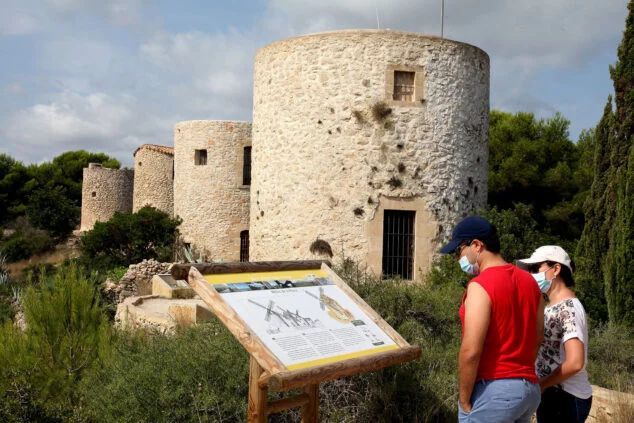
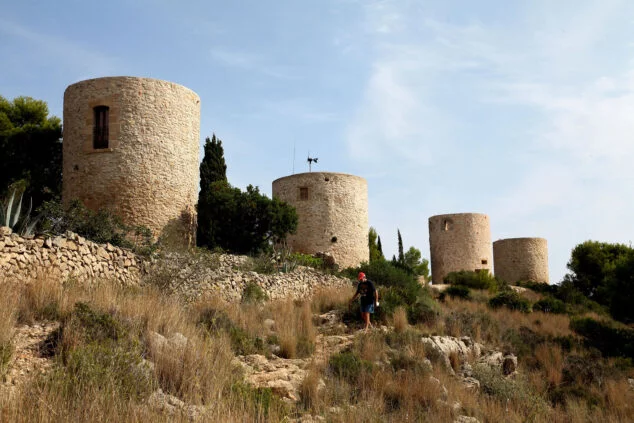
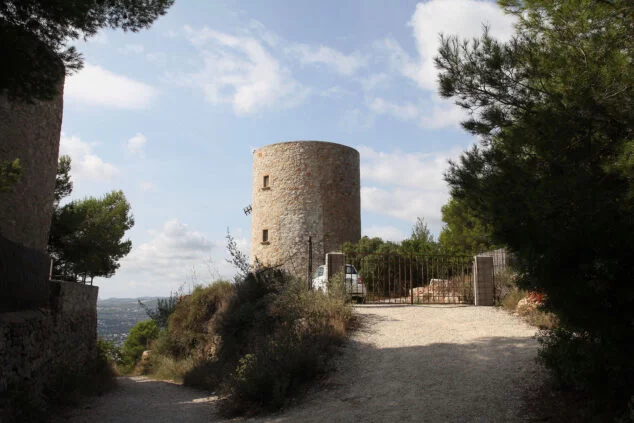
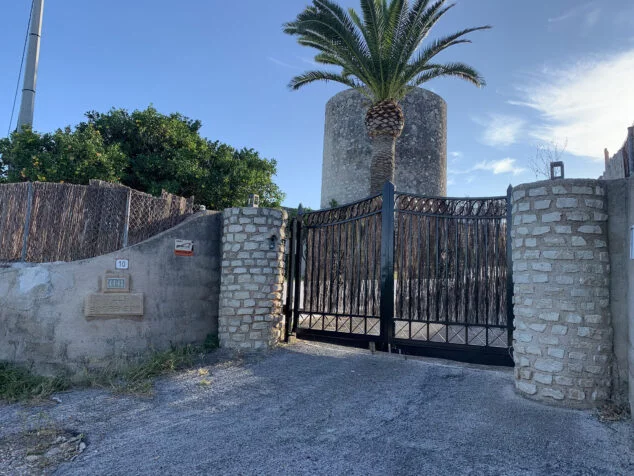
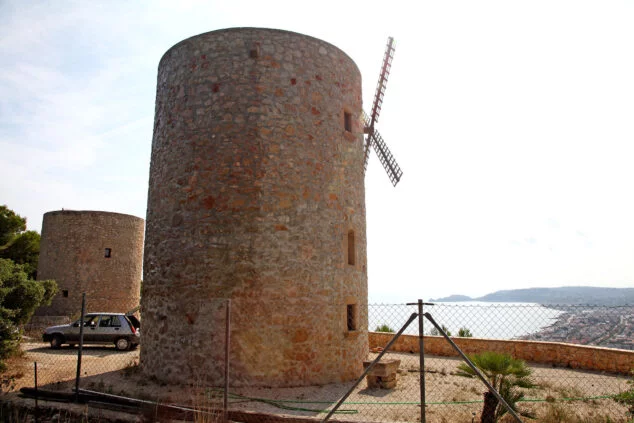






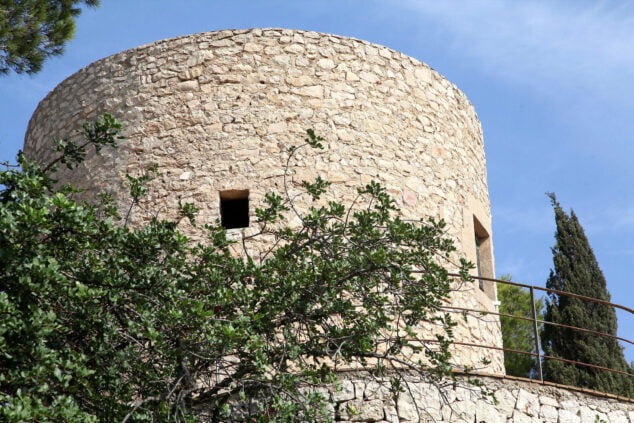












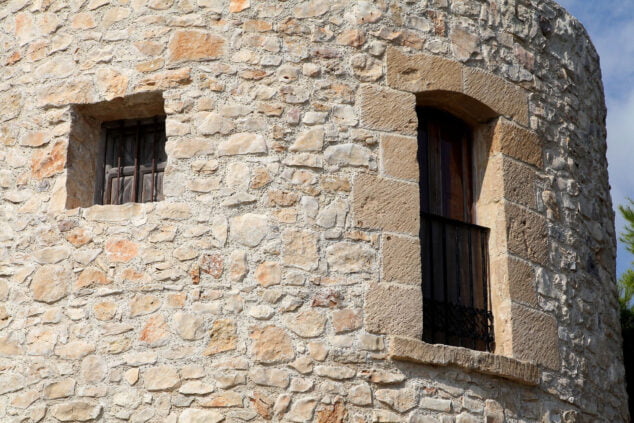










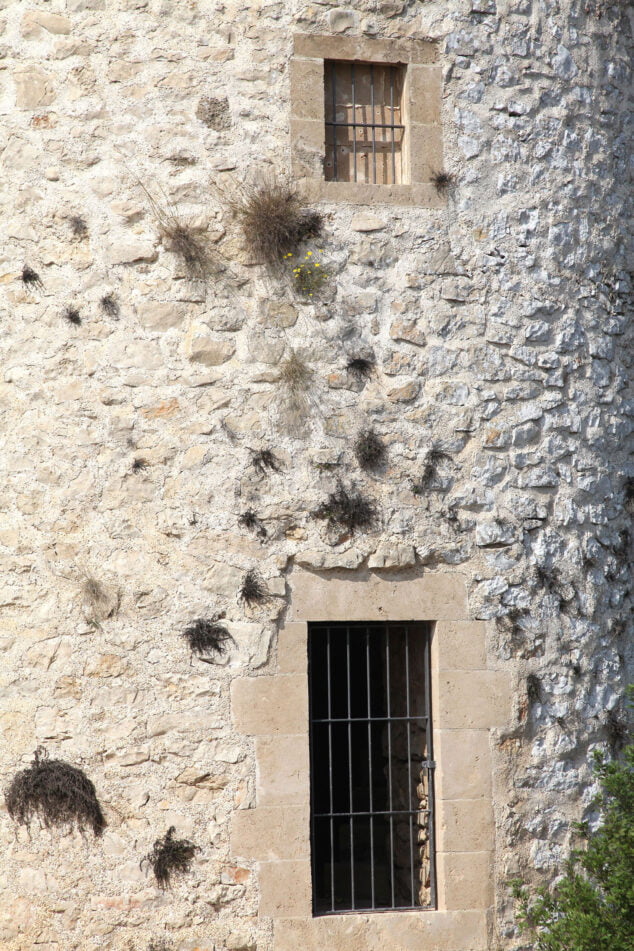
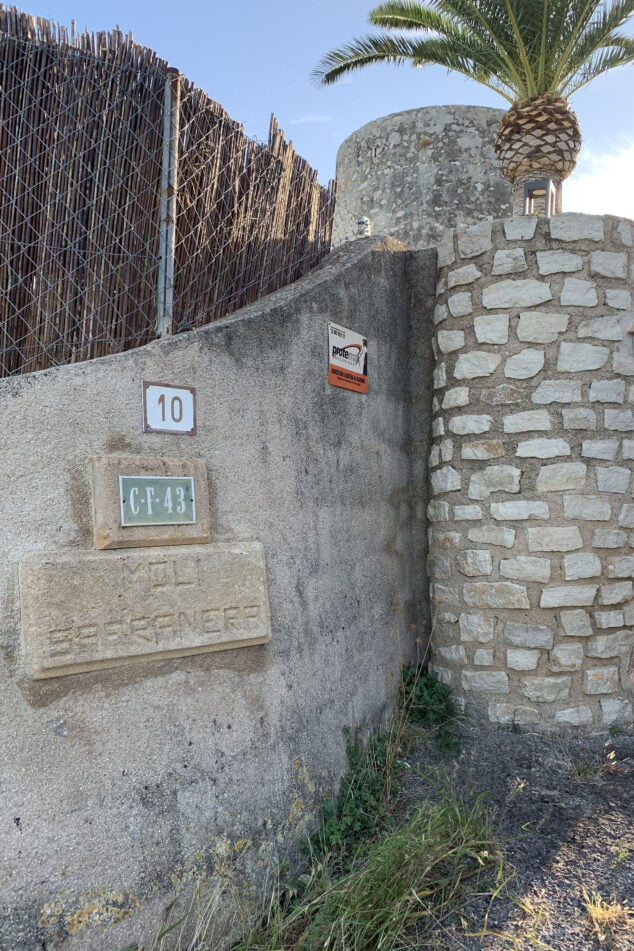






In what century did they stop working?
Was für ein schlechtes Deutsch